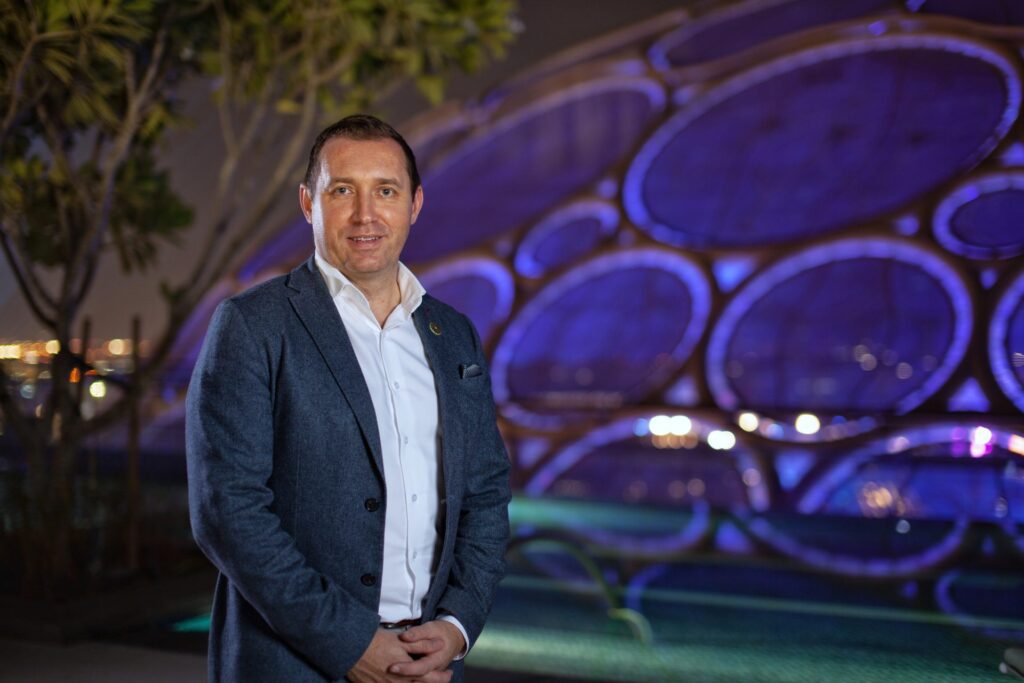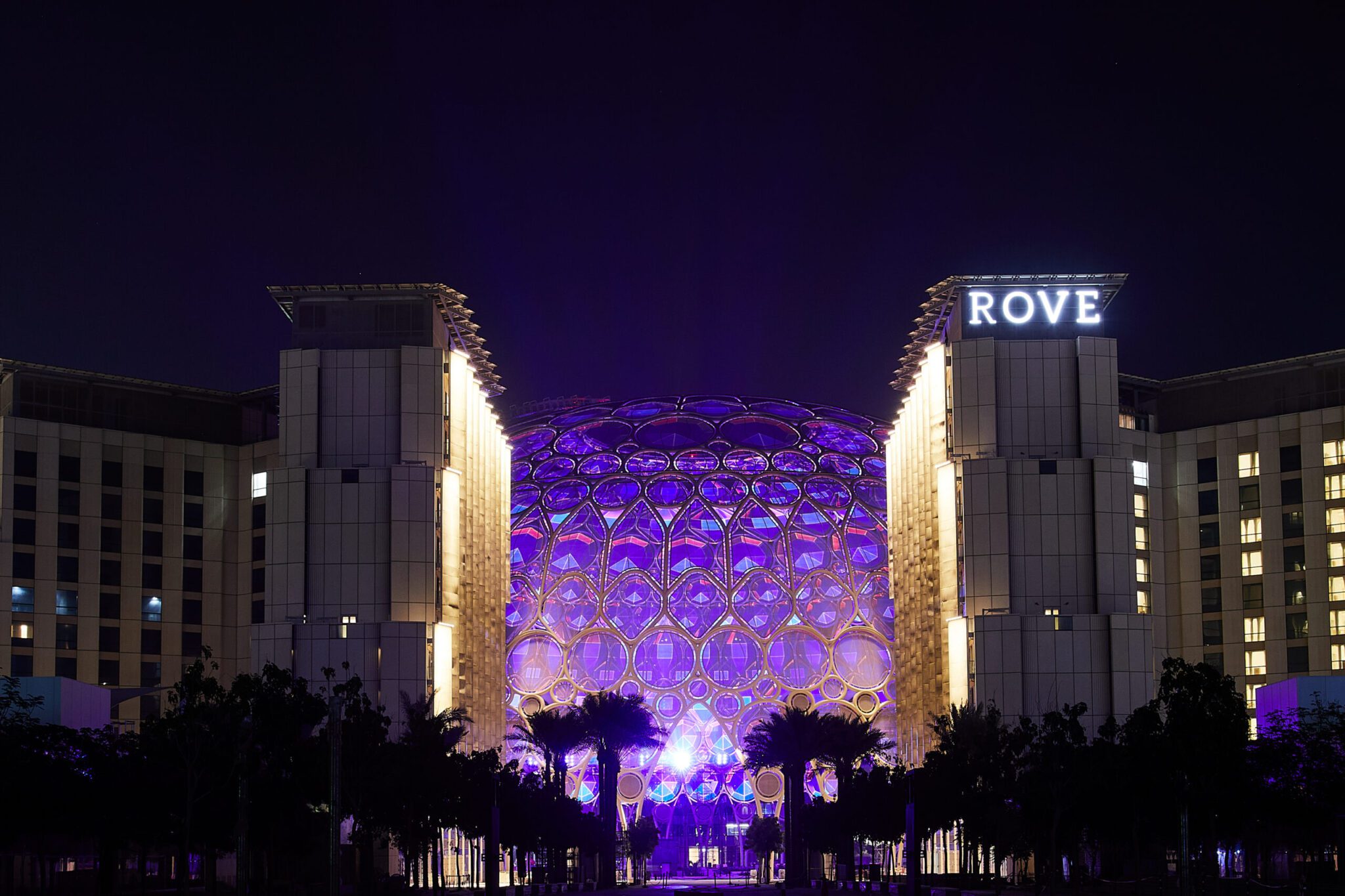Skift Take
With Dubai running out of space and visitor targets going up, local brands are beginning to think outside the emirate to drive more people to the destination.
Dubai-born hospitality brand Rove Hotels is ready to start expanding overseas. A joint venture between Burj Khalifa creator company Emaar and local holding firm Meraas, Rove was founded to help fill Dubai’s affordable accommodation gap.
With the backing of Emaar, Rove has secured some of the most coveted plots in the city, with its debut hotel opening in Downtown Dubai, and Dubai Marina and the Expo 2020 site in later years.
Today, Rove has around 3,500 rooms open and another 2,000 in the pipeline, with the ambition of having 10,000 keys open or in development within the next five years. Currently, all nine of Rove’s operational hotels are in Dubai, but Rove COO Paul Bridger is eyeing Saudi Arabia, the wider Gulf and even capital cities in Europe.
“Our success [at Rove] is led by the UAE and the country has continued to be strong,” Bridger told Skift. “Rove was born to address that whole [mid-market] gap. In the UAE much of the hotel inventory sits at the top in an upside-down pyramid where five-star and luxury are at the top and more affordable brands are at the bottom. If you want to meet your tourism ambitions, we can’t have everybody in the world thinking staying in $400-a-night hotels is the only option.”

A night in Rove can range between $190 for a prime location like Downtown to $95 at hotels further from the center.
According to Bridger, the new 10,000-key plan is two-fold: Grow in the Gulf for scale and grow in international locations for global brand building.
He explained: “We have an interest in international markets, particularly feeder markets into Dubai. We have a few opportunities in Europe and Asia but 80% of our focus is in the Middle East.”
“UK would be top of our list [for a hotel], London and Manchester have a lot of flights [to Dubai]. Any of the major cities would be a good launching point. Amsterdam would be great and we have interest there. It would be good in Paris. You’ve got to start somewhere. Brand building in a couple of key cities would be helpful for us.”
London in particular is full of rich UAE and Saudi citizens – potential investors – who call the UK capital home.
In May, Dubai’s ruler announced a country-wide tourism transformation plan. Sheikh Mohammed said the UAE has targeted 40 million tourist visits by 2030 and a sector contribution of AED450 billion ($123 billion) to the national GDP. Dubai’s best-ever year for tourism was in 2019 when it had close to 17 million overseas visits.
To push the whole country to 40 million visits, further brand-building must be done overseas to woo would-be travelers.
As Bridger said, Rove’s success is tied to the UAE’s success. He explained: “Being a Dubai-centric brand is one of our messages [overseas]. It helps us build awareness, it helps to have another UAE brand exported. In the UK, with all the Middle East investors, it appeals to a much wider audience the idea of the ‘Dubai’ brand.”
Rove Hotels In Saudi Arabia
In addition to Europe, Bridger sees great potential in Saudi Arabia. Around 15% of Saudi’s current hotel supply is three-star and below, and set to rise to 17% by the year 2030, according to Knight Frank. Massive projects in the kingdom are almost exclusively opting for luxury operators, such as The Red Sea, which will have only five-star hotels.
Bridger said: “We see loads of potential for a brand like Rove in Saudi. I can absolutely see some of our hotels in those [giga-project] locations. You’ve got to appeal to a wider audience.”
“Saudi is our big market, I was there last week. We have a lot of interest. Similar to Dubai, all the announcements in Saudi have been luxury, which is great to build a destination but the reality on the ground is that only a percentage of the population can afford and want to stay in those products.”
Saudi Arabia has a target of 150 million visitors by the end of the decade, 70 million of those coming from overseas. According to Bridger, more than 85% of travelers in the Middle East opt for more budget accommodation.
New Brand Launches A Possibility
Beyond geographical expansion, Bridger hinted at potential new brands under the Rove umbrella. Segments such as glamping and extended-stay brands are in his sights.
He said: “We don’t get hung up on star ratings or anything. We just want to appeal to the wider guests. We are looking at smaller hotels, we can do that quite well. We could do a much smaller hotel. We will do more branded residences. At part of our brand, we like to be at the front of change. In the future, we would probably look at doing a true extended-stay product. Somewhere between branded residence and hotel, we could do a product targeted at extended stays.
“In fact, I think there’s an opportunity for us to have a different offer in the category, whether it’s glamping, new ways of staying, branded residences.”
For now, his immediate focus is on more branded residences in Dubai and then more hotels outside of Dubai.
Bridger explained: “We think we can do more hotels in Dubai, but our real focus is on other emirates, the region and countries overseas. We’ve launched [a branded residence] in Downtown Dubai – a top location where you’d typically have a luxurious residence only. We’ve done something a bit cooler. In Dubai, we’ll announce a couple more in the next quarter.”
“Owning any real estate isn’t cheap but being more affordable is a good proposition. There will always be people around who want a one- or two-bed apartment for a reasonable price. Within days of launching, our Downtown project sold out.”
Have a confidential tip for Skift? Get in touch
Tags: Dubai Tourism, Emaar, hospitality news, hotel news
